
How to Use 12v5ah Battery: Examples, Pinouts, and Specs
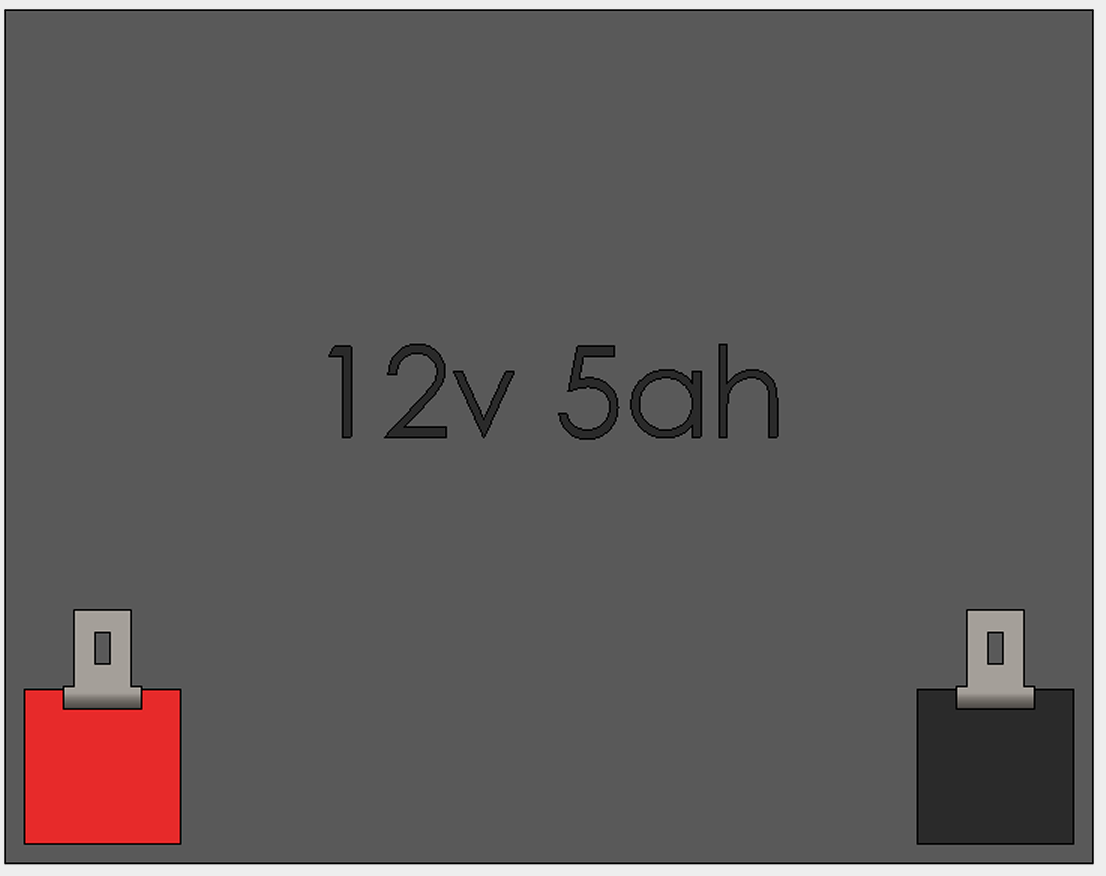
 Design with 12v5ah Battery in Cirkit Designer
Design with 12v5ah Battery in Cirkit DesignerIntroduction
The 12V 5Ah rechargeable battery is a sealed lead-acid (SLA) battery commonly used in a wide range of electronic applications. Its 12-volt output and 5 ampere-hour capacity make it suitable for providing power to small to medium electronic devices, emergency lighting systems, portable tools, small UPS systems, and hobby electronics projects. It is also frequently used in backup power applications due to its reliability and ease of charging.
Explore Projects Built with 12v5ah Battery
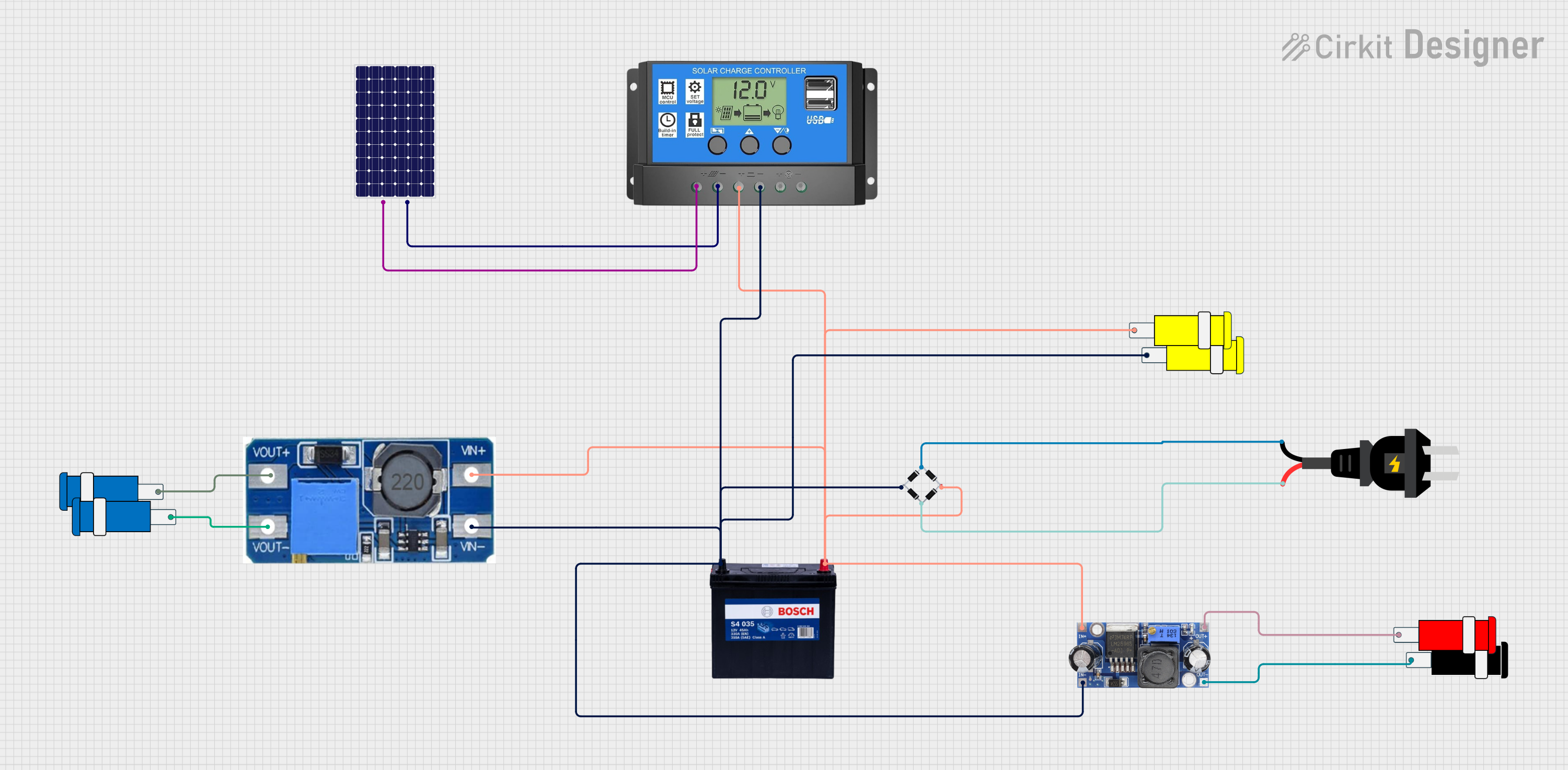
 Open Project in Cirkit Designer
Open Project in Cirkit Designer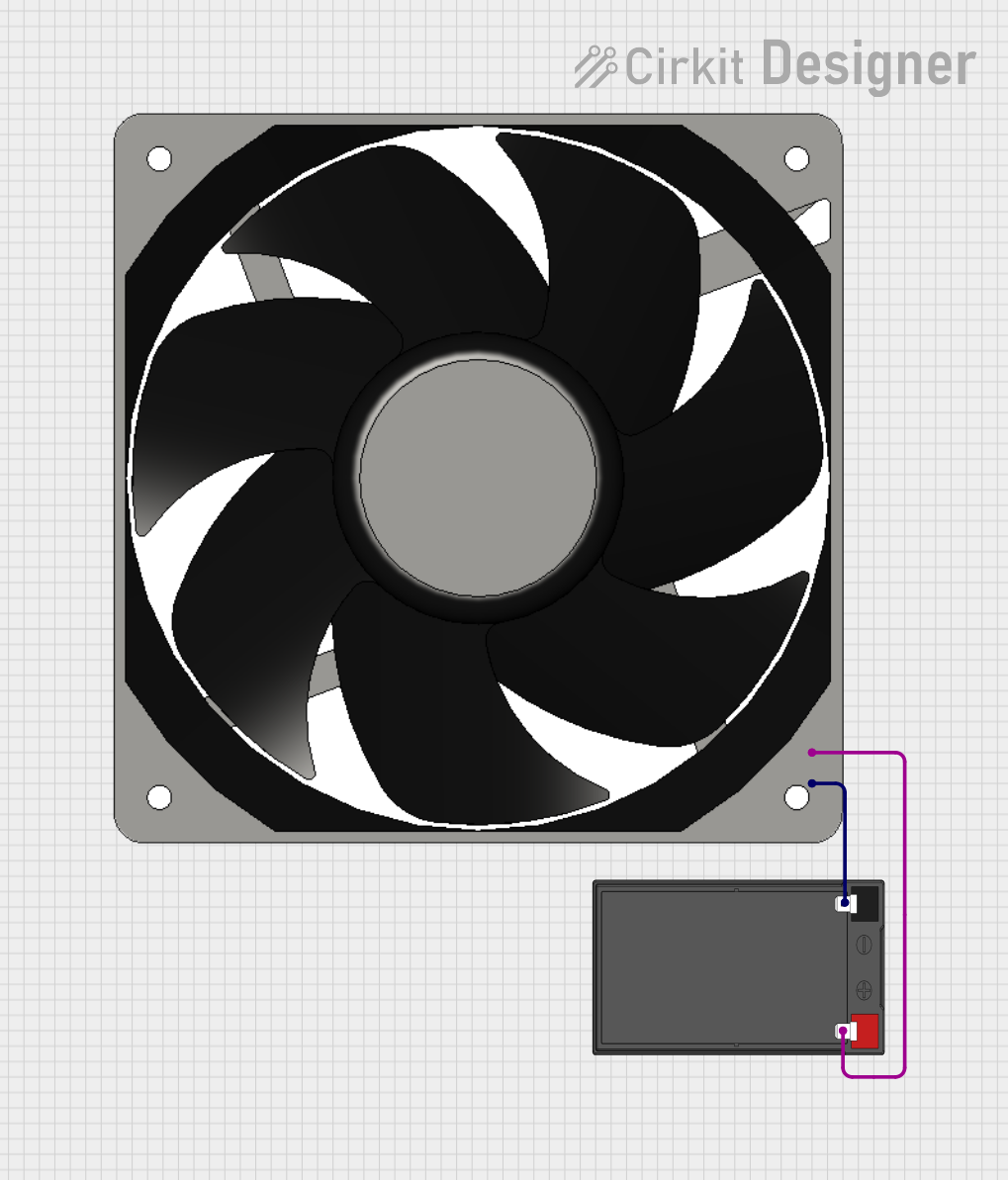
 Open Project in Cirkit Designer
Open Project in Cirkit Designer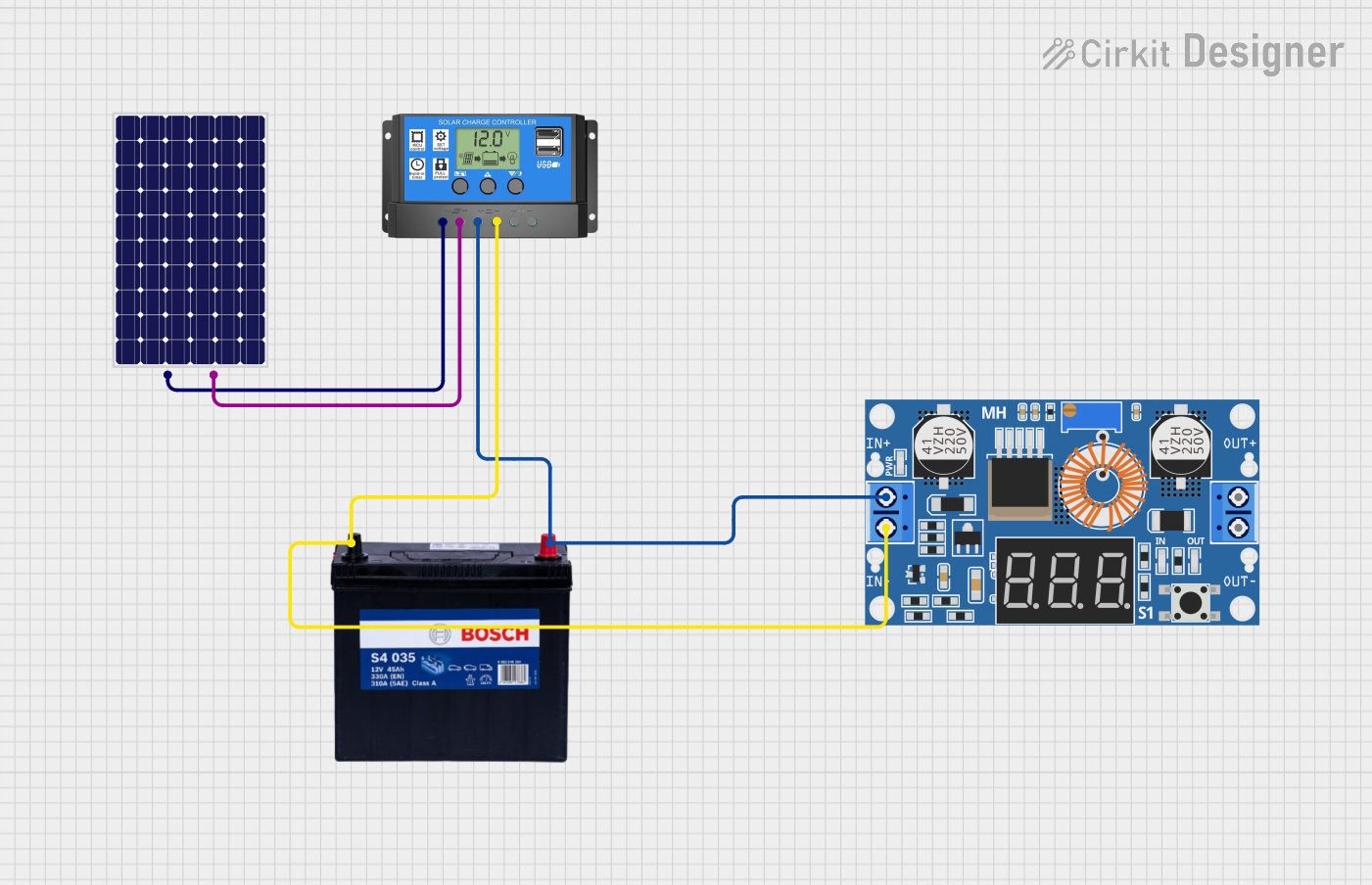
 Open Project in Cirkit Designer
Open Project in Cirkit Designer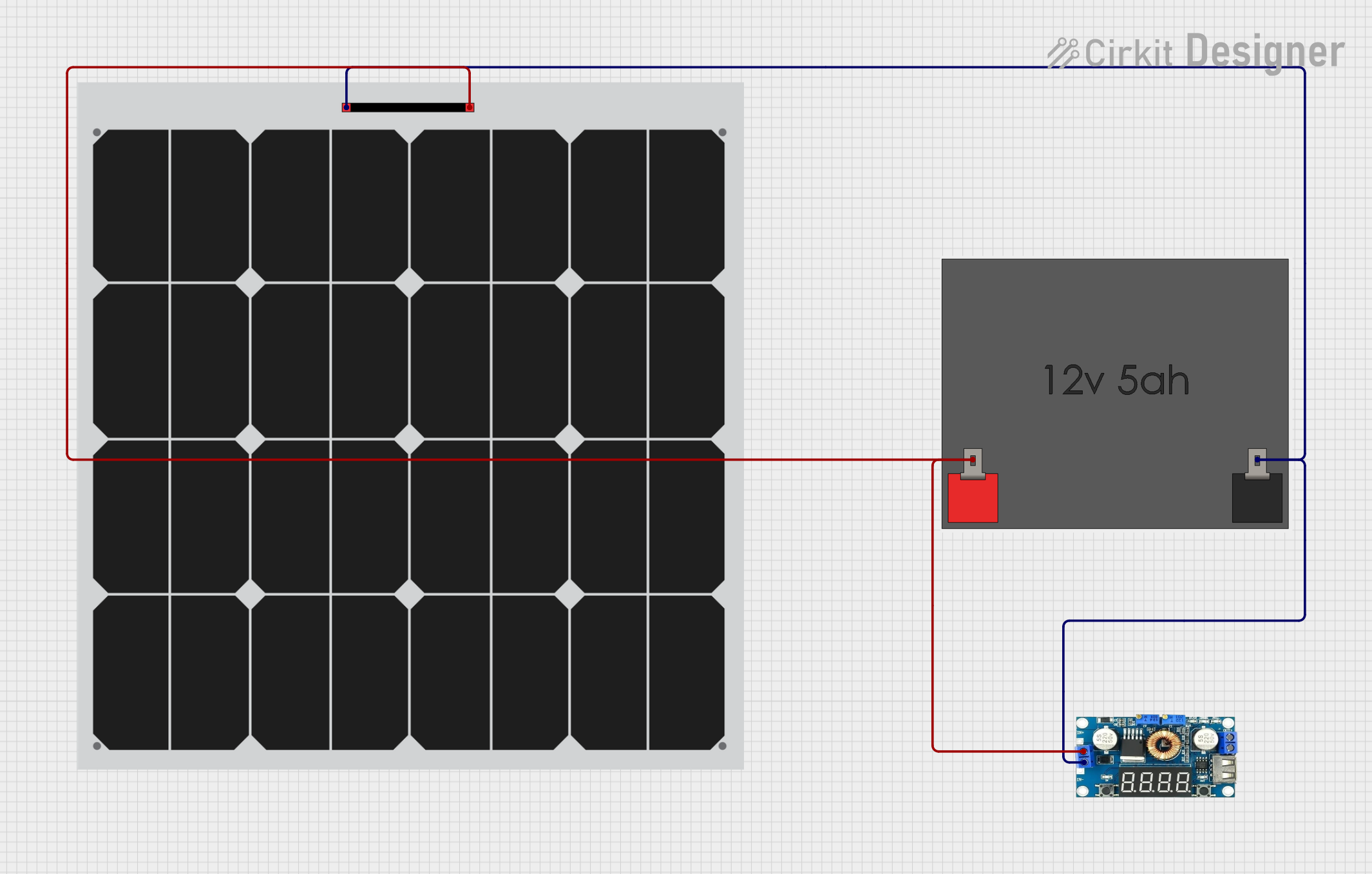
 Open Project in Cirkit Designer
Open Project in Cirkit DesignerExplore Projects Built with 12v5ah Battery

 Open Project in Cirkit Designer
Open Project in Cirkit Designer
 Open Project in Cirkit Designer
Open Project in Cirkit Designer
 Open Project in Cirkit Designer
Open Project in Cirkit Designer
 Open Project in Cirkit Designer
Open Project in Cirkit DesignerTechnical Specifications
General Characteristics
- Nominal Voltage: 12V
- Rated Capacity: 5Ah
- Type: Sealed Lead-Acid (SLA)
- Terminal Type: F1/F2 Faston Tabs
- Maximum Charging Current: 1.5A
- Float Charging Voltage: 13.5V to 13.8V at 25°C
- Cycle Use Charging Voltage: 14.4V to 15.0V at 25°C
- Initial Current: Less than 1.5A
- Operating Temperature Range:
- Charge: 0°C to 40°C
- Discharge: -15°C to 50°C
- Storage: -15°C to 40°C
Physical Characteristics
- Dimensions (L x W x H): Approximately 151mm x 65mm x 94mm
- Weight: Approximately 1.8 kg
- Case Material: ABS Plastic
Pin Configuration and Descriptions
| Pin Type | Description |
|---|---|
| Positive Terminal (Red) | Connect to the positive terminal of the load or charger |
| Negative Terminal (Black) | Connect to the negative terminal of the load or charger |
Usage Instructions
Charging the Battery
- Use an Appropriate Charger: Ensure the charger is compatible with a 12V SLA battery and does not exceed the maximum charging current of 1.5A.
- Connect Correctly: Connect the charger's positive lead to the battery's positive terminal and the negative lead to the battery's negative terminal.
- Monitor the Charging Process: Avoid overcharging the battery by monitoring the voltage and current. The battery should be charged until it reaches its float charging voltage.
- Disconnect After Charging: Once fully charged, disconnect the battery from the charger to prevent overcharging.
Using the Battery in a Circuit
- Voltage and Current Ratings: Ensure that the load does not exceed the battery's nominal voltage and rated capacity.
- Polarity: Always connect the battery with the correct polarity to the circuit to prevent damage.
- Fuse Protection: It is recommended to use a fuse in series with the positive terminal to protect against short circuits or overcurrent conditions.
Best Practices
- Storage: If the battery is to be stored for an extended period, it should be charged periodically to maintain its capacity.
- Maintenance: Regularly check the battery's voltage and physical condition.
- Safety: Wear protective equipment when handling batteries, and ensure proper ventilation when charging.
Troubleshooting and FAQs
Common Issues
- Battery Won't Charge: Ensure the charger is functioning and the connections are secure. Check if the battery voltage is not below the minimum voltage.
- Reduced Capacity: If the battery does not hold a charge as expected, it may be nearing the end of its life cycle or has been subjected to improper charging practices.
Troubleshooting Tips
- Check Connections: Loose or corroded connections can prevent proper charging or discharging.
- Test the Charger: Use a multimeter to ensure the charger is outputting the correct voltage.
- Inspect for Damage: Look for signs of physical damage, swelling, or leakage.
FAQs
Q: How long does it take to charge the battery? A: With a 1.5A charger, it takes approximately 4 hours to charge from fully discharged to full capacity.
Q: Can I use this battery in series or parallel? A: Yes, batteries can be connected in series to increase voltage or in parallel to increase capacity, but ensure all batteries are of the same type and age.
Q: How often should I charge the battery if not in use? A: It is recommended to charge the battery every 3 to 6 months when in storage.
Q: Is it normal for the battery to get warm during charging? A: Some warmth is normal, but excessive heat may indicate overcharging or a malfunctioning battery.
Q: What is the life expectancy of this battery? A: The life expectancy is typically 3 to 5 years, depending on usage and charging practices.
Example Code for Arduino UNO
// This example demonstrates how to use the 12V 5Ah battery to power an Arduino UNO
// Note: The Arduino UNO operates at 5V, so a voltage regulator is needed.
#include <Arduino.h>
void setup() {
// Initialize the digital pin as an output.
pinMode(LED_BUILTIN, OUTPUT);
}
void loop() {
// Turn the LED on (HIGH is the voltage level)
digitalWrite(LED_BUILTIN, HIGH);
// Wait for a second
delay(1000);
// Turn the LED off by making the voltage LOW
digitalWrite(LED_BUILTIN, LOW);
// Wait for a second
delay(1000);
}
// Note: Always ensure that the input voltage to the Arduino's voltage regulator
// does not exceed the recommended limits. Use a suitable DC-DC converter or
// voltage regulator to step down the 12V to a safe level for the Arduino.
Remember to include a voltage regulator when connecting the battery to an Arduino UNO, as the Arduino operates at 5V and the battery outputs 12V.